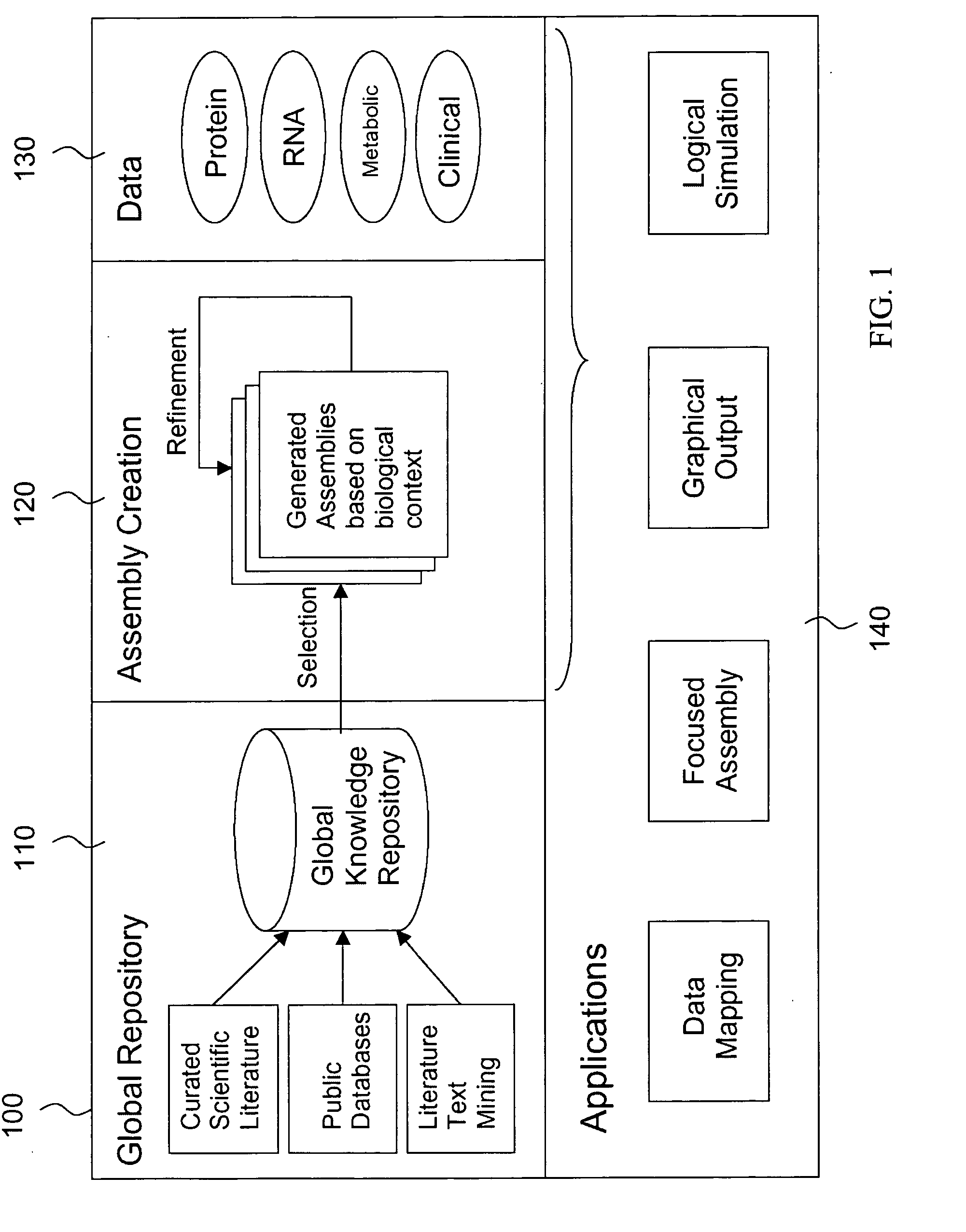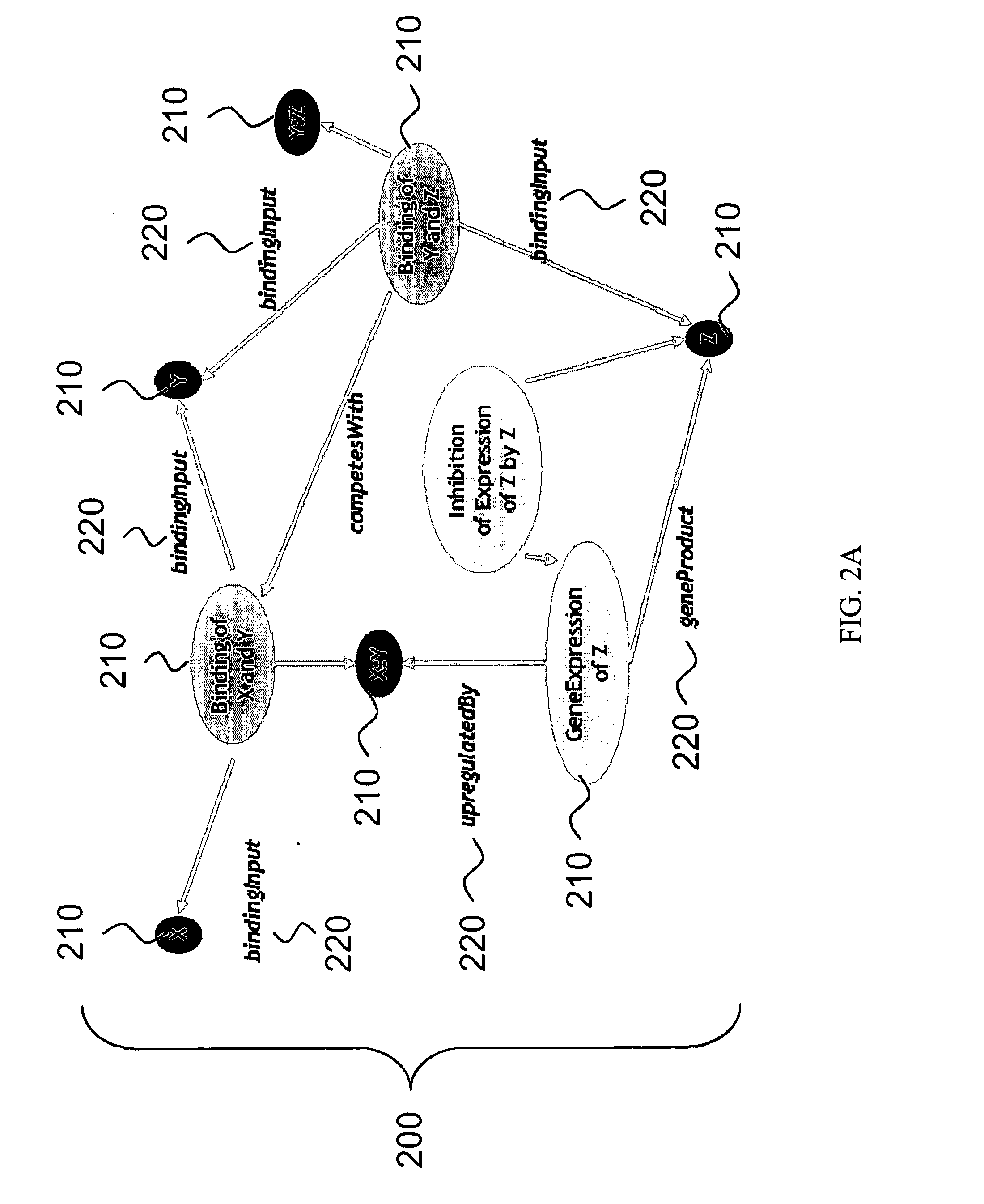Method, system and apparatus for assembling and using biological knowledge
a biological knowledge and system technology, applied in the field of biological knowledge discovery methods, systems biology, instruments, etc., can solve the problems of inability to fully understand biological systems, difficult to understand biological systems, complex interrelations, etc., to facilitate understanding and revelation, and effectively model
- Summary
- Abstract
- Description
- Claims
- Application Information
AI Technical Summary
Benefits of technology
Problems solved by technology
Method used
Image
Examples
example 2
Biomarker Identification Algorithm
[0103] An example of a biomarker identification algorithm in accordance with the invention is described below and in the pseudo code in FIG. 21. In general, this algorithm looks at data characterizing a candidate protein and scores it by taking into account a number of key factors that would make the protein a suitable biomarker. The algorithm brings together metrics from a number of sources, assigns a numerical value, and pools them together to give an overall score which can be used to assess any protein. Specifically, the proteins with the highest absolute score have the greatest number of similarities to an ideal biomarker. The factors used in this example are gene expression changes with a drug, existing knowledge about the nature of the gene product, and proximity to a known biomarker. The algorithm was applied to datasets derived from an experiment in which gene expression changes were measured in response to a drug, across three cell lines...
PUM
 Login to View More
Login to View More Abstract
Description
Claims
Application Information
 Login to View More
Login to View More - R&D
- Intellectual Property
- Life Sciences
- Materials
- Tech Scout
- Unparalleled Data Quality
- Higher Quality Content
- 60% Fewer Hallucinations
Browse by: Latest US Patents, China's latest patents, Technical Efficacy Thesaurus, Application Domain, Technology Topic, Popular Technical Reports.
© 2025 PatSnap. All rights reserved.Legal|Privacy policy|Modern Slavery Act Transparency Statement|Sitemap|About US| Contact US: help@patsnap.com



